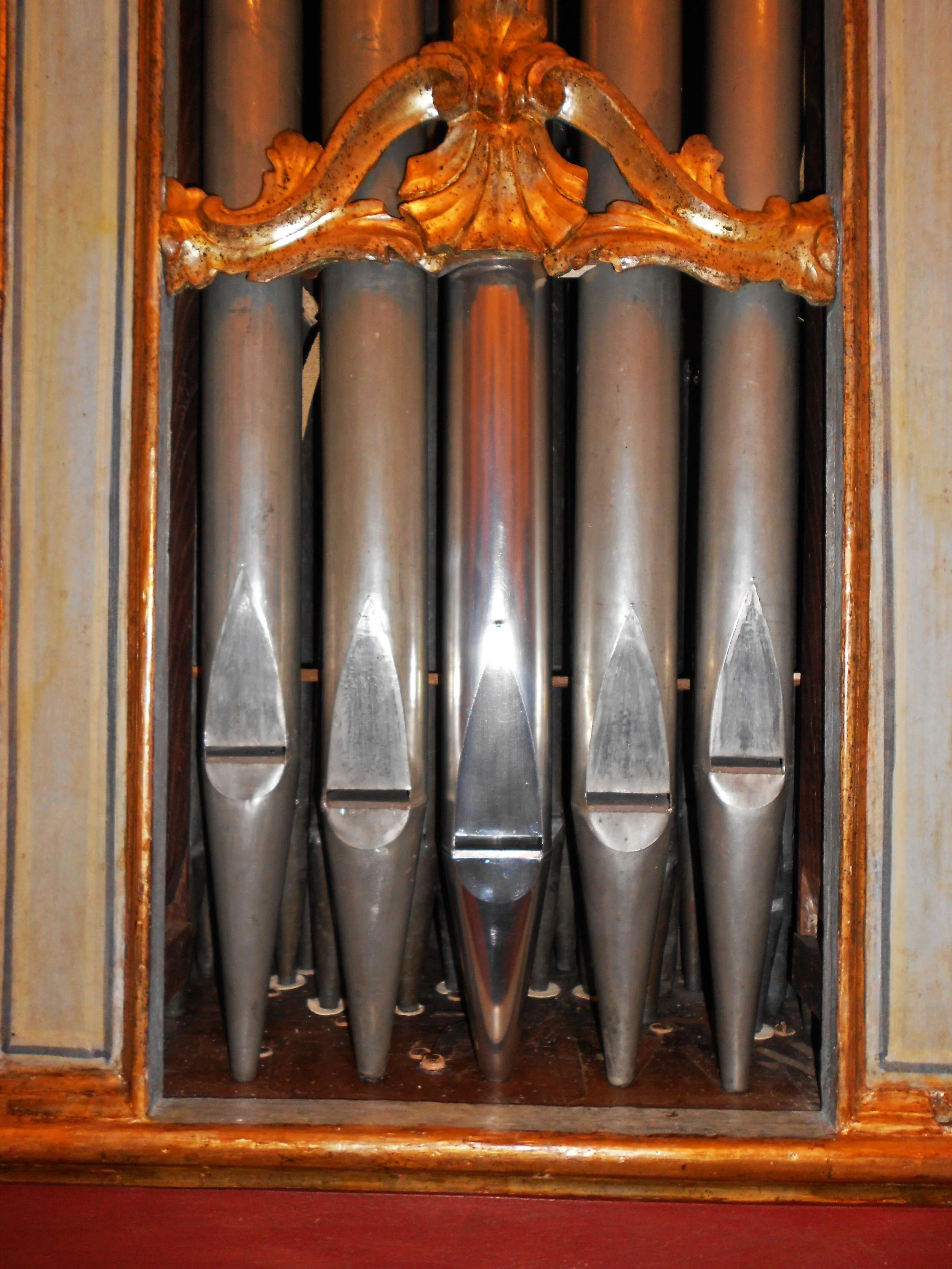Positiv organ, XVIII cent.
Villa "Montegallo", Osimo, Ancona
RESTORING, year 2014
This instrument is a positive organ, unnamed and undated, but analyzing its features is likely to attribute it to some craftsman who was in contact with the Neapolitan organ school tradition, represented, among others, mostly by the Cimino family, the De Martino, the Rossi. Its dating is more difficult, as the positive organ model practiced by that school remains substantially unchanged for more than two centuries, from the second half of the 600th to almost 800. In this case, constructional details and their feature make us stretch for a dating between the beginning and the end of 1700. The organ case is tempered and is decorated with elegant gold-plated carving and moldings. It’s divided into two blocks: the lower part contains the wind supply system, consisting of two side by side hand-pumped wedgebellows with 5 folded , the upper part encloses the rest of the instrument. The metal pipe work is in almost pure lead alloy, with very thin thicknesses and the languid is unnicked. The only wooden pipe, of chestnut, are for the first octave of the Principale 8 ', and they are stopped up to F. The Flauto in XII 22/3' on treble is cylindrical and theVoce umana 8' is tuned flat.
The instrument before intervention was in a very critical state of conservation but not at all altered: it suffered for extended xylophil attack and for water damage. The leathering was completely exhausted and the pipe ranks, removed and put disarray into two boxes, were needing a complete restauration: most of them were crushed, even completely flatted. Toward thewooden parts, first every single element was disinfested in anoxic chamber, , then was restored by consolidation work, trough patching of similar wood and limiting the use of synthetic resin to extreme cases As in Neapolitan tradition, the pipes have no note’s signs, so the delicate phase of rearranging pipes into their original position was done basing on diameter and mouth ratio values. By data mining, it’s clear that the original pitch has been raised of about a tone and half; then the pipes’ length were returned close to the original condition by solding rings of the same alloy. An electric blower was added.
Disposition
Flauto in V 22/3'
Voce umana 8'
Principale 8'
Ottava 4'
XV 2'
XIX 11/3'
XXII 1'
Manual range: 45 tasti C/E-c3
Accessories: drawknob "tiratutti"
Temperament: 1/4 comma meantone , a1 410 Hz at 18°C
Wind pressure: 45 mm water column





